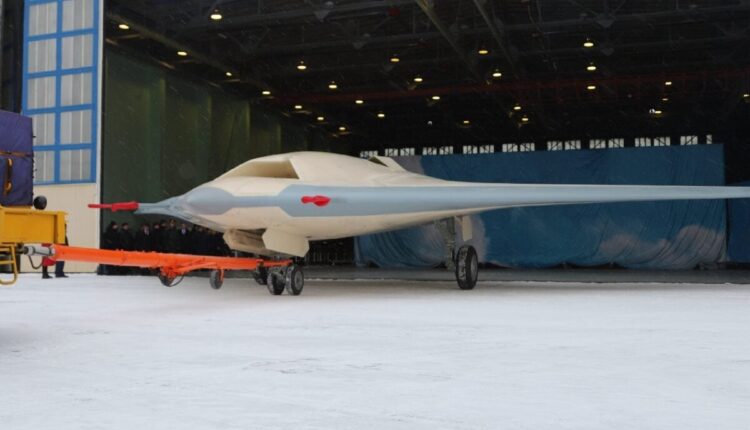©2021 Reporters Post24. All Rights Reserved.
A U.S. Army officer breaks down for us the importance of Russia’s new S-70B stealth drone and how it could shape Moscow’s forces in the years ahead: Russia’s S-70B Okhotnik (“Hunter”) drone with stealth characteristics is one step closer to full deployment. The combat unmanned craft successfully test-fired missiles that hit ground targets, according to Jane’s Defense quoting Russian state-run media on May 28. This was the first time the Okhotnik tested precision-guided munitions. The ground attack missiles were reportedly the same models that the Russian Su-57 stealth fighter uses.
Okhotnik Could Be Firing Top Cruise Missile
Jane’s believes the missiles fired by the Okhotnik were the Kh-59MK2 air-to-ground munitions with inertial guidance that can be changed in flight by satellite input. This stand-off, low altitude cruise missile has a 311-mile range and is 14-feet long. It is able to be fired from internal weapons bays that empower an aircraft to have stealth characteristics. The cruise missile was initially designed for the MiG-35, Su-32, and Su-35.
How Stealthy Is It?
If testing goes according to plan, Russia hopes the Okhotnik can enter serial production by 2024. It first flew in 2019. Its AL-41 engine can “fit into the contours of the fuselage,” to help raise the level of stealthiness. The drone’s flat nozzle would also reduce radar signature, according to The Defense Post. The aircraft is without antennas, air inlets, or exhaust vents.
Good Speed with Powerful Engine and Long Range
The 20-ton, 46-foot Okhotnik can fly at a speed of 621-miles per hour. The flying wing S-70B has the same AL-41F1 engine as the Su-57 to give it an extended range of 3,728 miles.
Loyal Wingman Flying with Su-57
The S-70B is designed to fly with the Su-57 stealth fighter. Up to four of the drones can be used to interact with the Su-57 in flight as “loyal wingmen.” This means the Okhotnik can fly in reconnaissance mode and feed targeting data to the Su-57. For offensive strike missions the S-70B can carry up to 4,400 pounds of ordnance. The Okhotnik is slated to be fully autonomous. It will likely be launched from Russia’s new Ivan Rogov amphibious assault ship.
Not So Fast
While the test fire of missiles appears promising, the Okhotnik still has a journey ahead of it before being transferred to Russia’s air force. The autonomous feature looks optimistic. It is likely not fully-stealth, although it seems to have stealth capabilities. The Su-57’s role as a drone quarterback sounds good, but the Okhotnik has so far not been tested in tandem with the stealth fighter.
We’ve Heard This Story Before
Russia sometimes gets excited about a drone and then the testing phase loses momentum. Moscow once had another heavy, stealth combat drone called the Skat in 2007 but it never made it to full production.
Ukraine Has Been a Graveyard for Russian Drones
Russia is having mixed success with its Orlan-10 recon drone that is used to target and adjust artillery fire in Ukraine. The Ukrainian military often announces Orlan-10s that have been shot down or have crashed landed due to malfunction. The Orlan-10 is a much smaller drone with limited mission parameters, but it shows that the Okhotnik will need to be combat tested before full deployment as a “loyal wingman.”
The Okhotnik does have enviable specifications if reports from Russian state-run media can be believed. The range and speed are impressive. Stealthiness is always a plus and flying in formation with Su-57s has much potential. But the Russian military-industrial complex, suffering from a myriad of financial sanctions, may have trouble bringing the Okhotnik to full capabilities.
Now serving as 1945’s Defense and National Security Editor, Brent M. Eastwood, PhD, is the author of Humans, Machines, and Data: Future Trends in Warfare. He is an Emerging Threats expert and former U.S. Army Infantry officer.


